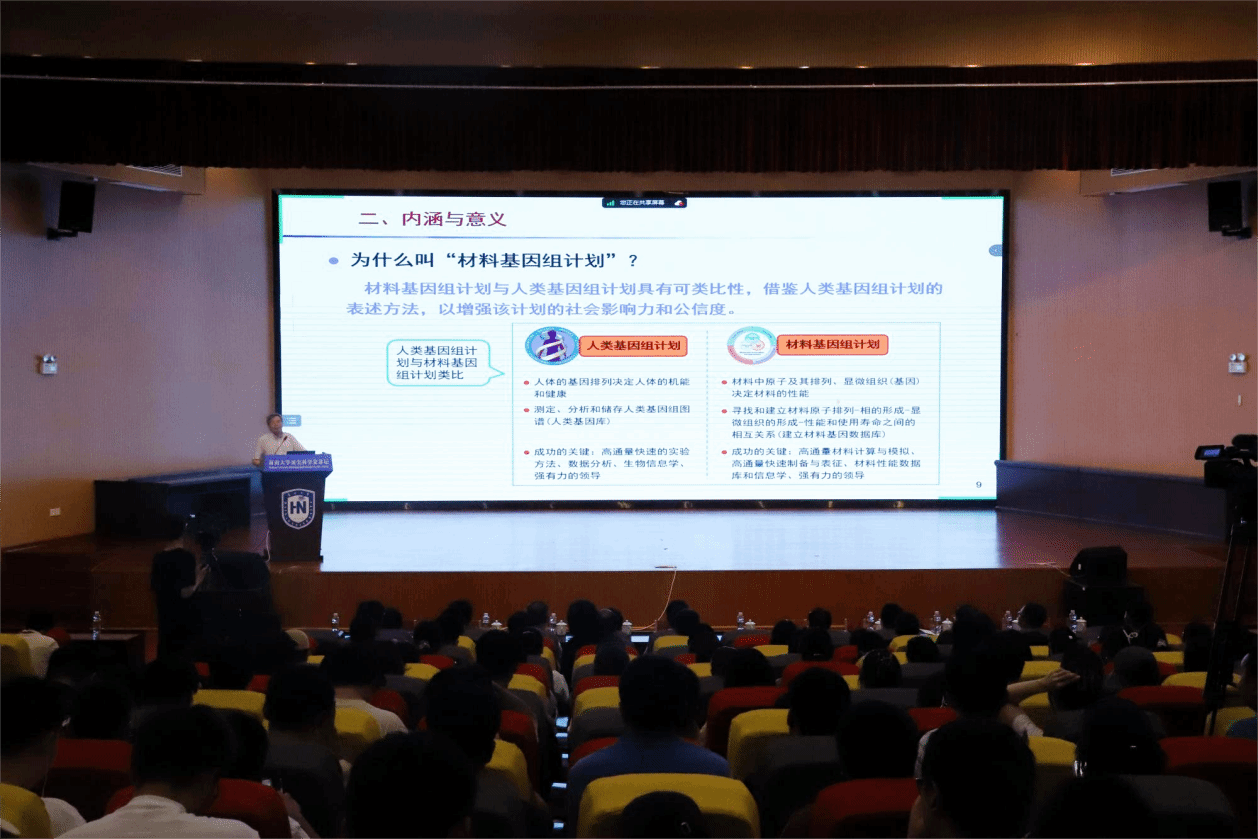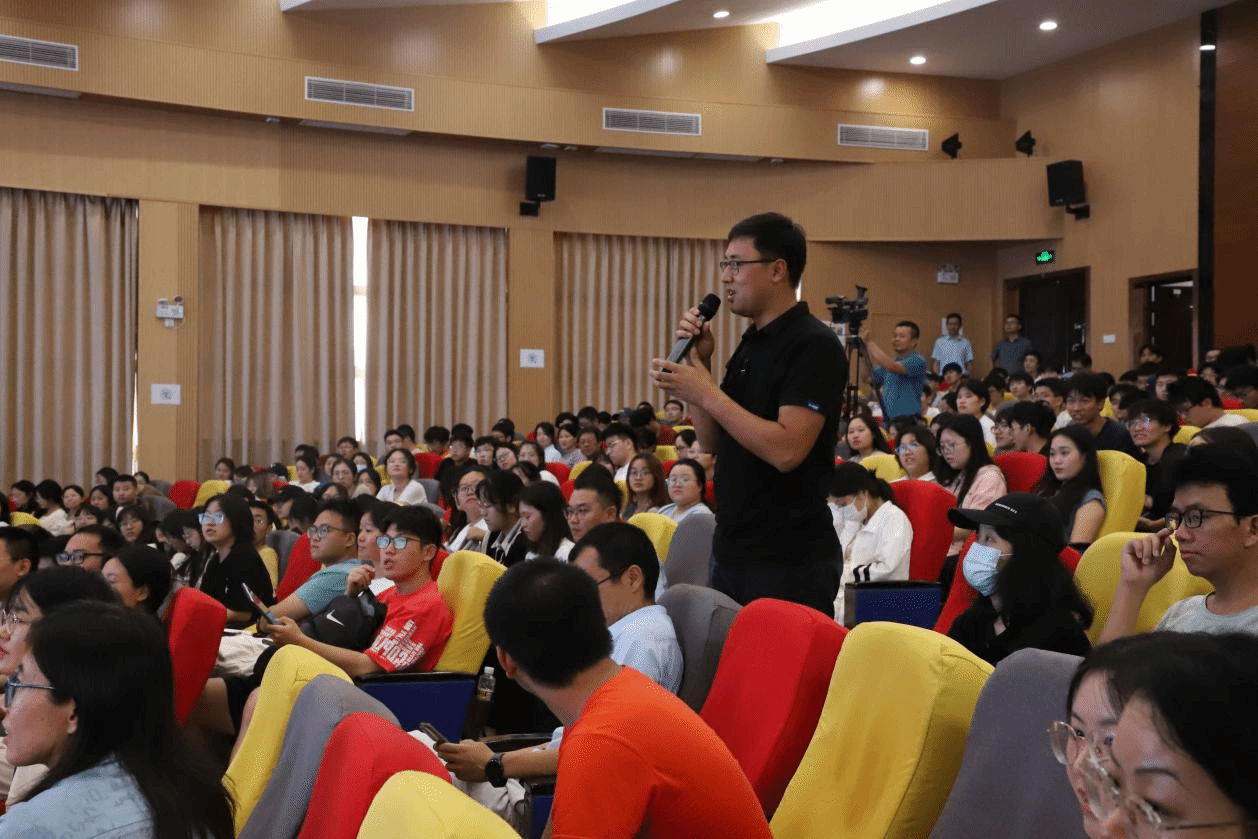On the afternoon of May 8th, the 23rd lecture of the Hainan University Distinguished Scientist Lecture Series was held in the lecture hall of Tianjiabing Building. Xie Jianxin, a member of Chinese Academy of Engineering, delivered a report titled “Overview of Genetic Engineering of Materials”. Wu Zhonghai, Associate Counsel of Hainan Association for Science and Technology, and Fu Xuanguo, Chairman of the HNU Council, as well as other leadership members of the University, including Nie Qingbin, He Yong, Zou Yonghua, Li Buhong, Chen Jun, Tan Yong, and Yang Zhixin, attended the lecture. Zou Yonghua chaired the lecture.

Xie is giving lecture. Photo by Zhou Siyuan
Xie Jianxin, starting from the basic fact that material sector suffers from tech hysteresis and lacks of innovative breakthrough, presented a detailed introduction of the Materials Genome Initiative (MGI) or material genetic engineering from five aspects, namely background, implication and significance, progress made at home and abroad, new paradigms and cases, and prospects.
Xie noted that material genetic engineering as a revolutionary progress in material science and technology, aims to construct a comprehensive gene database consisting of composition, micro-structure, process and properties, by studying thoroughly the structure of electron, atom and molecular scale, micro-structure of grain and phase, as well as macroscopic preparation technology. Material genetic engineering, with the help of efficient autonomous computing, automatic intelligent experiments, big data, and artificial intelligence, has replaced the traditional research and development (R&D) model, becoming an internationally recognized “accelerator” for new materials development, representing the forefront of material science and technology.
He pointed out that “integration and collaboration” is the core idea of the MGI. With new theories, new methods, new paradigms and disruptive technologies, we achieve integration of rational design, efficient experiment and big data technology, and collaborative innovation throughout the R&D process through efficient computational design platform, advanced experimental platform and database platform. This helps speed up the R&D and application of new materials.

Q&A session. Photo by Zhang Yuxin
The lecture attracted a large number of students and teaching staff. They shared their ideas on the topics related to the lecture and asked questions. Xie responded to them patiently and answered their questions.
Representatives of Hainan Association for Science and Technology, other HNU leadership members, chief of Schools and Departments, and more than 700 teachers and students attended the lecture both online and off-line.
Source from HNU News
Translated by Lin Zhiyi
Proofread by Chen Chuanxian, Yang Jie